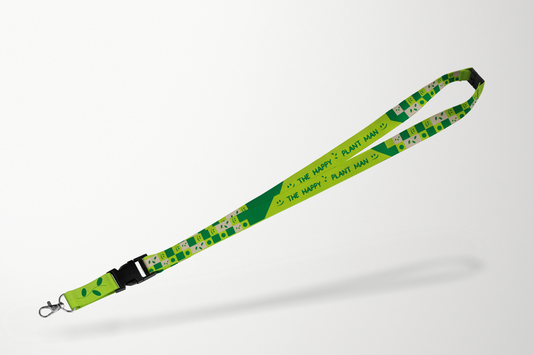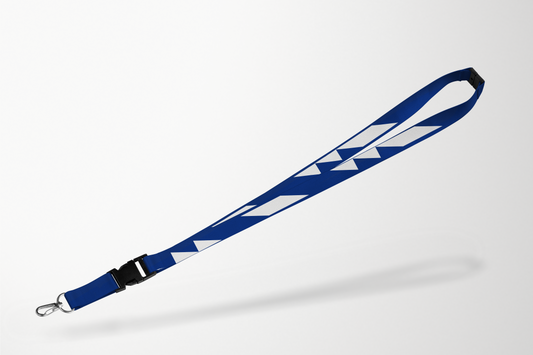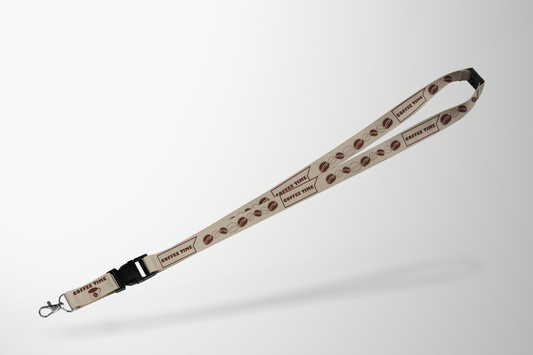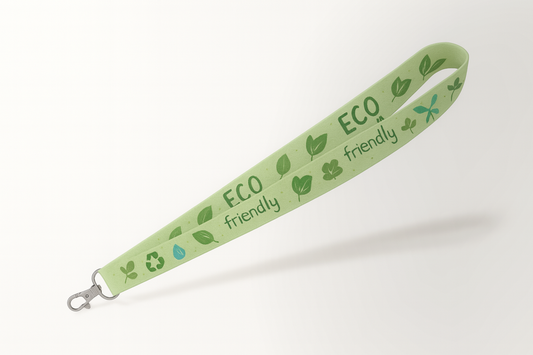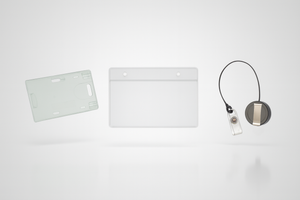Understanding Materials Used in Eco-Friendly Lanyards
Eco-friendly Lanyards appeal due to their use of sustainable materials that have minimal environmental impact. Typically made from bamboo, organic cotton, recycled PET (plastic bottles transformed into new products), hemp, cork, and plant-based bioplastics, these materials are chosen for their biodegradable nature or because they are made from recycled content, reducing plastic waste and contributing to a circular economy. Noteworthy for its biodegradability and softness, bamboo contrasts with the synthetic materials in traditional lanyards. Companies utilize eco lanyards to reflect responsibility and environmental concern, aligning with current market expectations. By understanding the specific attributes of each material, businesses can align their choices with sustainability goals, benefiting from reduced environmental impact while ensuring the functionality of their products.
Bamboo, renowned for its fast growth and renewable qualities, makes an excellent material choice for eco-friendly lanyards. As a biodegradable option, bamboo decomposes faster than many synthetic alternatives, providing an ethical choice without sacrificing durability. Organic cotton, grown without synthetic chemicals, supports sustainable farming and ensures biodegradability at the product's end-of-life. Recycled PET, derived from used plastics, effectively decreases landfill waste and uses less production energy compared to new plastics. These materials encourage companies to take the lead in sustainability, resonating with consumers who value ecological practices, potentially fostering stronger brand loyalty and customer relationships.
Additionally, hemp and cork are gaining popularity in the eco lanyard sector. Hemp offers durability and is a renewable resource, requiring little water and no synthetic additives, making it eco-friendly for various uses. Cork, harvested from cork oak bark, is also renewable and biodegradable, known for its strength and unique aesthetic qualities. Bioplastics, made from plants like corn, show an alternative that reduces reliance on fossil fuels. Choosing any of these materials allows companies to present themselves as environmentally responsible, meeting consumer calls for more sustainable products and ensuring alignment with corporate environmental values, positioning themselves as leaders in sustainable innovation.
Comparing Bamboo and Polyester Lanyards for Durability
Bamboo and polyester lanyards each offer unique advantages in terms of durability. Polyester, long favored for its durability and resistance to tearing, moisture, and weather, is ideal for demanding environments and robust daily use. However, awareness of environmental concerns has driven interest in sustainable alternatives that maintain quality. Though not as tough as polyester, bamboo lanyards remain strong and sustainable, making them a viable option for environmentally-minded consumers. Choosing between these materials often involves balancing durability needs with eco-friendliness, based on user requirements.
Bamboo lanyards provide a softer texture and promote environmental mindfulness. While not matching polyester's toughness under extreme conditions, they are durable enough for typical use, such as corporate and indoor events. The primary distinction between bamboo and polyester is their environmental impact. Derived from petroleum, polyester contrasts with bamboo, which grows rapidly and requires fewer resources, making it preferred for companies boosting their sustainability profiles. With this durability information, businesses can decide wisely to meet operational and ecological requirements.
For organizations focused on sustainability, bamboo lanyards align well with eco-friendly initiatives. They signify environmental responsibility and offer an aesthetically pleasing choice. Although not equally as durable as polyester in harsh conditions, bamboo's environmental benefits are compelling for many companies. This selection supports evolving corporate sustainability goals, conveying a brand's values effectively. Ultimately, the decision depends on prioritizing either extreme durability or a positive ecological contribution, helping to shape a brand's narrative regarding environmental responsibility.
Evaluating the Cost-Effectiveness of Eco-Friendly Lanyards
Evaluating the cost-effectiveness of eco-friendly lanyards involves weighing initial expenses against long-term economic benefits. While these products may initially appear pricier, material savings and potential government incentives often offset costs over time. Sustainable materials, like recycled PET, economize energy and resources in production, lowering lifecycle expenses. Moreover, adopting eco-lanyards aligns with consumer preferences for sustainability, fostering brand loyalty and potentially expanding market share.
For many companies, operating within a sustainable framework enhances efficiencies and reduces costs, driven by resource optimization and waste minimization. Wider eco-friendly product adoption can result in economies of scale, further reducing costs. These financial advantages often surpass initial investments, making eco-lanyards a sensible component of marketing and operational strategies.
The cost-effectiveness of eco-friendly lanyards extends beyond financial savings. An emphasis on environmental responsibility boosts consumer perception, cultivating trust and enhancing competitive market positioning. Hence, eco-friendly lanyards serve not only as practical solutions to ecological challenges but also as strategic tools for building brand image and reinforcing long-term consumer relationships. Investing in these products underlines a company’s commitment to sustainability, appealing to environmentally-conscious consumers.
Utilizing Eco-Friendly Lanyards in Event Planning for Zero-Waste Goals
Eco-friendly lanyards prove essential in event planners’ zero-waste strategies. Aligning with sustainable choices, such as bamboo or recycled plastics, helps minimize ecological footprints and appeal to environmentally-aware participants. This choice supports comprehensive environmental objectives, ensuring event-related materials adhere to green principles.
Events focusing on sustainability resonate with audiences valuing eco-conscious practices, fostering brand differentiation and rapport with ethically-minded attendees. Emphasizing sustainable materials underscores commitment to zero-waste goals. Biodegradable or recyclable lanyards at events contribute to circular economy models, promoting reuse and sustainability among participants.
Integrating zero-waste strategies into event planning requires inclusivity of sustainable practices throughout, from logistics to supplier collaboration. Stakeholders should clearly communicate these efforts to highlight positive environmental impacts and zero-waste benefits. A comprehensive narrative around an event’s green credentials appeals to conscious audiences and sets industry precedents. Opting for eco-friendly lanyards illustrates leadership in sustainability, encouraging broader industry adoption of responsible practices, enhancing brand reputation, and establishing meaningful connections with eco-conscious attendees.
Customizing Eco-Friendly Lanyards to Reflect Your Brand
Customizing eco-friendly lanyards allows businesses to enhance their brand identity while meeting sustainability targets, and many now complement these efforts with holders for cards that complete their suite of eco-friendly branding accessories. These lanyards can be tailored via various eco-friendly methods, including water-based inks and biodegradable components like bamboo and recycled PET. A popular approach is using natural dyes, offering a personalized touch that meets sustainability desires. This capacity helps businesses project an eco-friendly image, appealing to consumers prioritizing environmental transparency. Customization improves brand visibility and signals a commitment to sustainable practices, increasingly demanded by the marketplace.
Eco-friendly customizations transcend mere aesthetics, encompassing materials that mirror brand sustainability values, ensuring every facet of the lanyard aligns with corporate environmental aims. For instance, organic bamboo lanyards, soft to the touch, can be customized using natural dyes, preserving their eco-friendly life cycle. Recycled PET lanyards provide robust branding opportunities while mitigating plastic waste. This meets consumer demands for reduced environmental impact, enhancing brand reputation and fostering loyalty.
These customizations incentivize companies to fulfill corporate social responsibility goals and demonstrate leadership in eco-friendly advancements. By creating unique customized eco-lanyards, businesses can align products with market trends and environmental principles. Such initiatives not only project a green image but also support sustainability within operational frameworks. This differentiates a brand in competitive arenas, fostering deeper connections with environmentally-conscious consumers. Customizing eco-friendly lanyards allows brands to make a positive environmental statement while showcasing a unique identity and commitment to sustainability.
Integrating Eco-Friendly Lanyards into Corporate Sustainability Initiatives
Adopting eco-friendly lanyards in corporate sustainability initiatives requires strategic alignment with broader social responsibility objectives. Companies should start with a sustainability audit to assess environmental impacts, pinpointing areas for improvement, like waste reduction and ethical supply chains. Setting clear, measurable goals—such as reducing carbon emissions—ensures progress tracking. Eco-friendly lanyards symbolize corporate dedication to environmental health and ethics, making a tangible contribution to sustainability agendas.
These steps ensure that eco-lanyard adoption complements wider sustainability strategies, not just as standalone efforts. Aligning lanyard use with global benchmarks, such as the UN Sustainable Development Goals, enhances the initiative's credibility. Employing renewable materials, eco-friendly packaging, and ensuring supply chain transparency bolster sustainability commitments. This comprehensive method yields environmental and economic advantages, demonstrating to stakeholders that sustainability is integral to business operations.
Moreover, engaging employees in sustainability practices fosters a culture of innovation and continuous improvement. Training and encouraging participation in eco-friendly actions embed sustainability into company culture, bolstering the organization’s reputation as a sustainability leader. Adopting eco-friendly lanyards becomes a strategic component of broader CSR frameworks, promoting active environmental stewardship.

